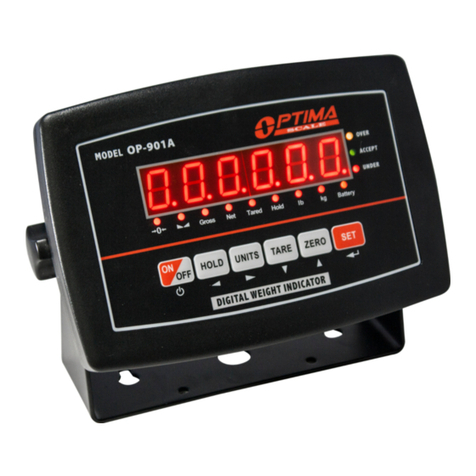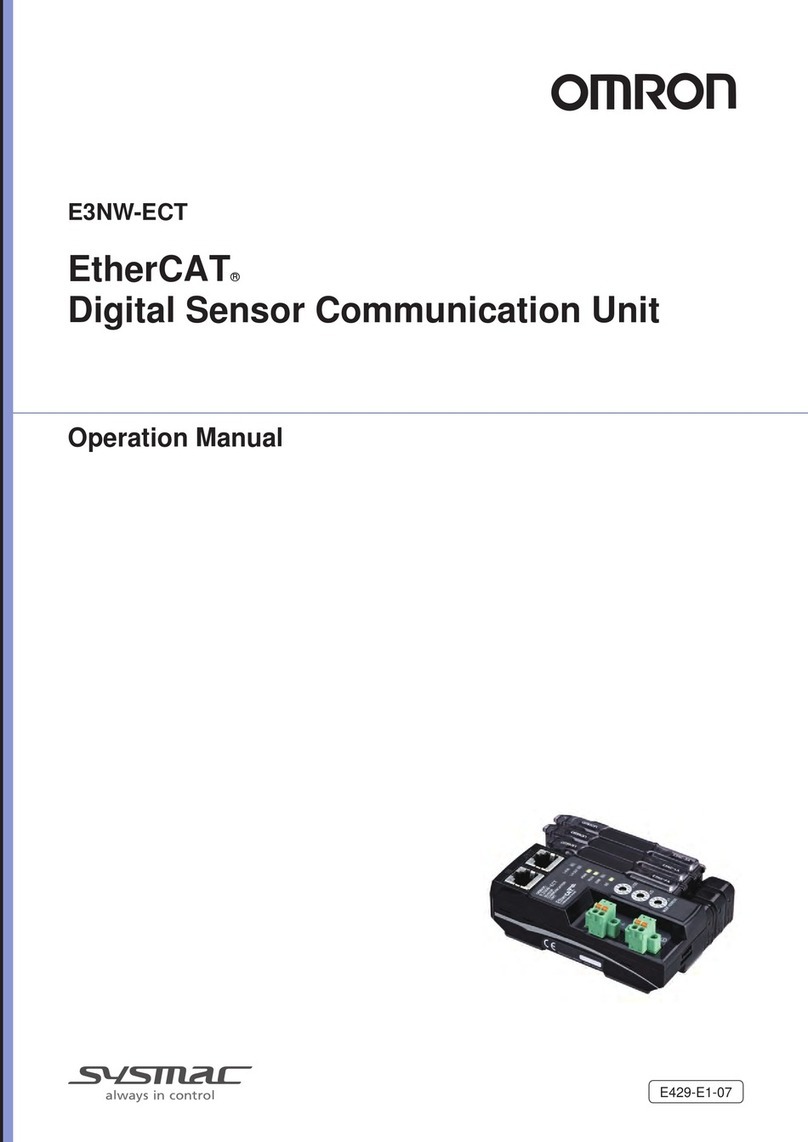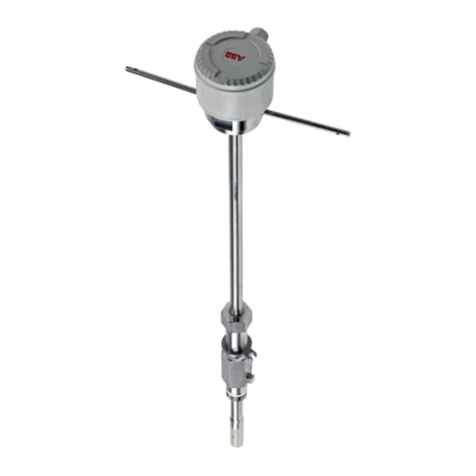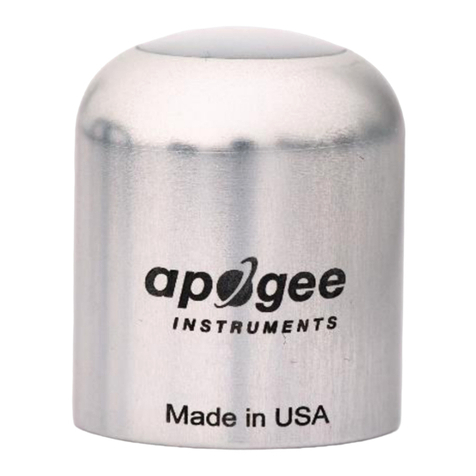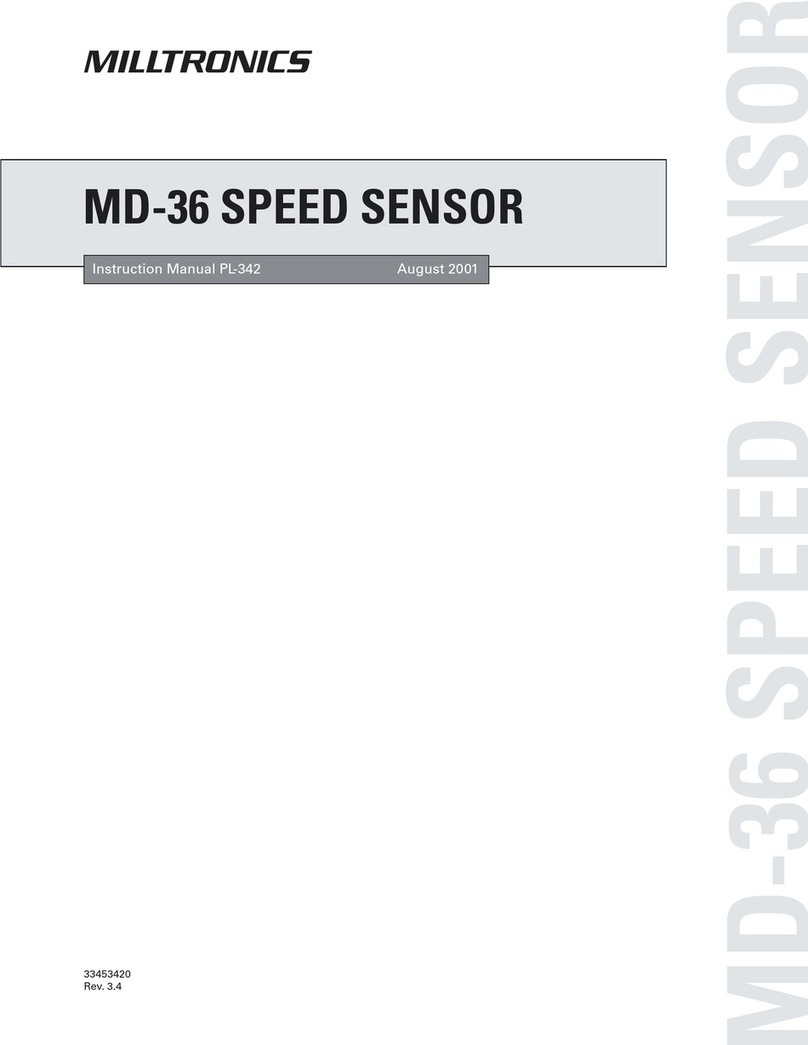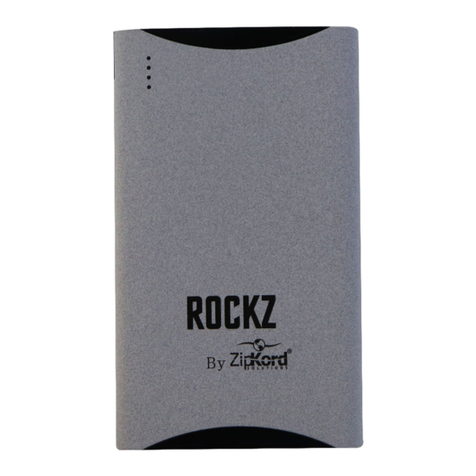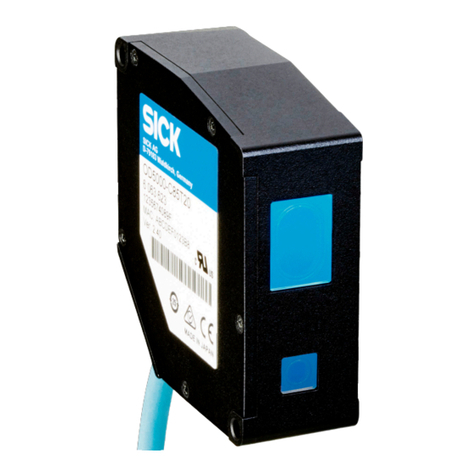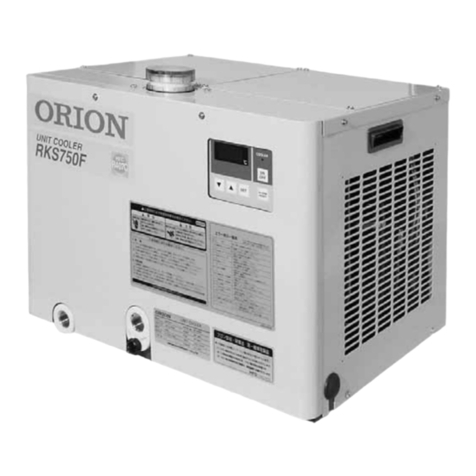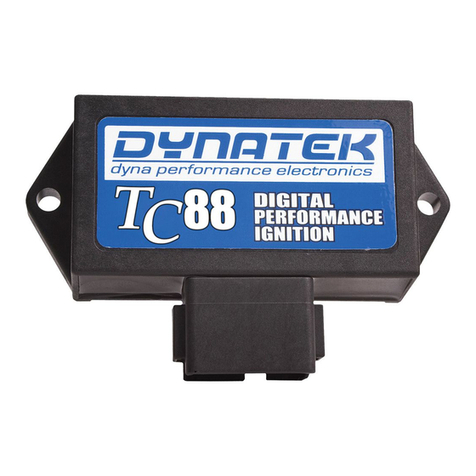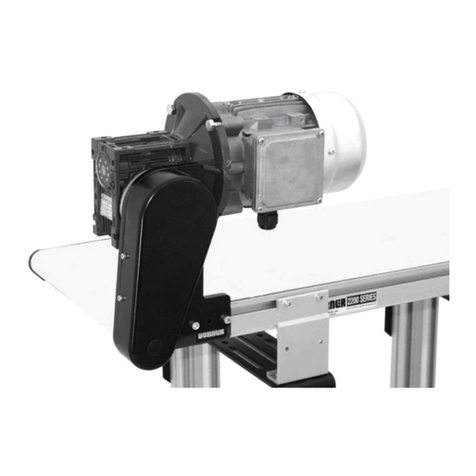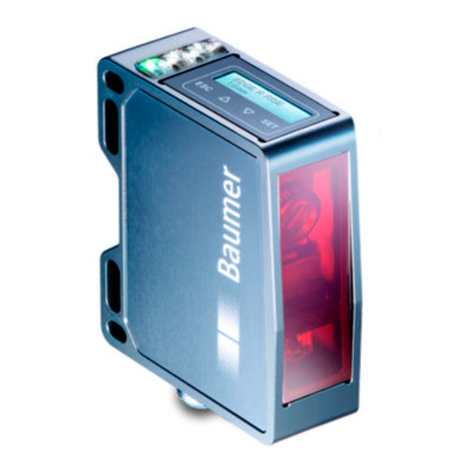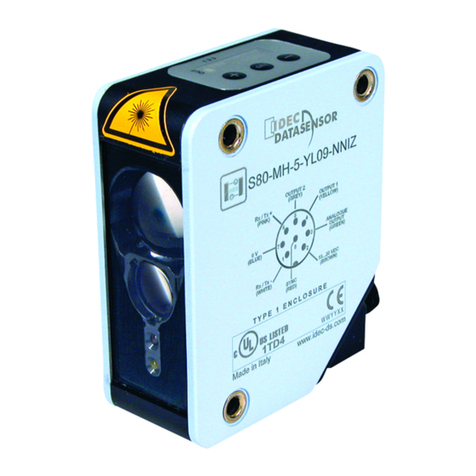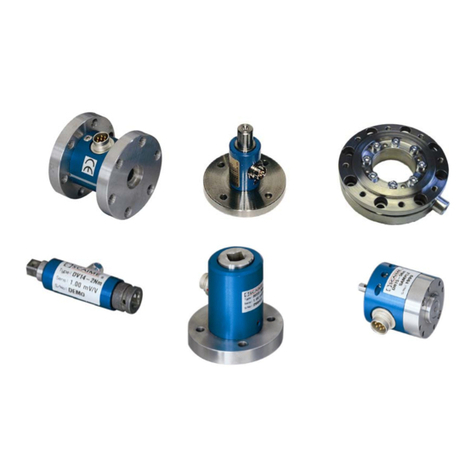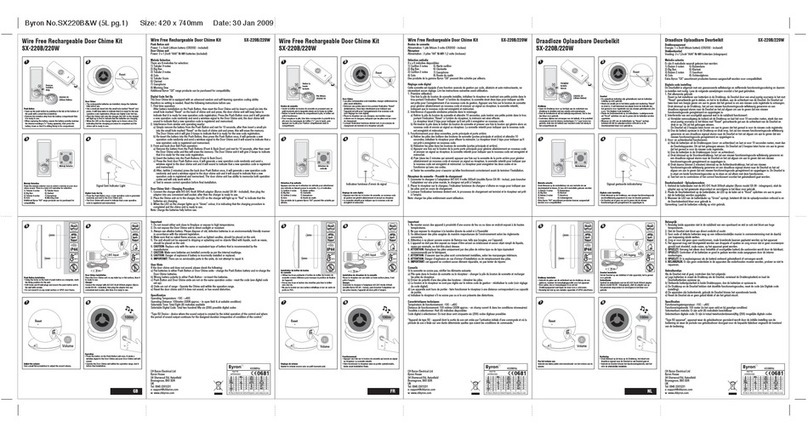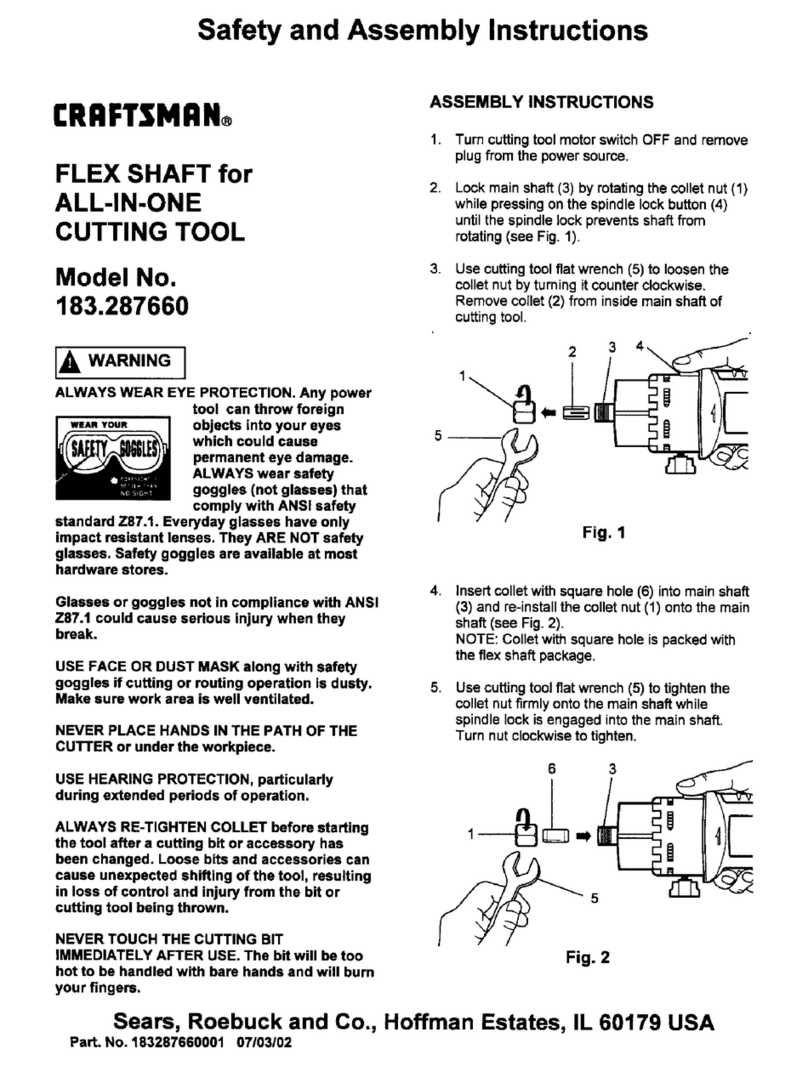TEKTELIC Communications T0004893 Product manual

PROPRIETARY:
The information contained in this document is the property of TEKTELIC Communications Inc. Except as specifically
authorized in writing by TEKTELIC, the holder of this document shall keep all information contained herein
confidential, and shall protect the same in whole or in part from disclosure to all third parties.
© 2018 TEKTELIC Communications Inc., all rights reserved.
All products, names, and services are trademarks and registered trademarks of their respective companies.
DISCLAIMER:
Material contained in this document is subject to change without notice. The material herein is solely for
information purposes and does not represent a commitment by TEKTELIC or its representatives. TEKTELIC has
prepared the information contained in this document solely for use by its employees, agents, and customers.
Dissemination of this information and/or concepts to other parties is prohibited without the prior written consent
of TEKTELIC. In no event will TEKTELIC be liable for any incidental or consequential damage in connection with the
furnishing, performance or use of this material.
TEKTELIC reserves the right to revise this publication in accordance with formal change control procedures defined
by TEKTELIC.
TEKTELIC Communications Inc.
7657 10th Street NE
Calgary, AB, Canada T2E 8X2
Phone: (403) 338-6900
TEKTELIC COMMUNICATIONS INC.
Kona Home Sensor
Technical Reference Manual
Document Type:
Technical Reference Manual
Document Number:
T0005370_TRM
Document Version:
1.2
Product Name:
Kona LoRa IoT All-in-One Home Sensor
Product Codes:
T0004893†, T0004885†, T0004895†, T0004896†
†Only applicable to module revisions above Rev C. Some new features are not backward
compatible with modules Rev C and below. Module revisions above Rev C only include Base and
PIR models (Base model and External Connector model Rev C have been merged into a single
Base model Rev D).

Kona LoRa IoT Home Sensor TRM T0005370_TRM Version 1.2
TEKTELIC Communications Inc. Confidential Page 2 of 35
Revision History
Version
Date
Editor
Comments
0.1
Dec 11, 2017
D. Smith
First release.
0.2
Dec 22, 2017
D. Smith
Included details of for each configuration.
0.3
Apr 06, 2018
D. Smith
Added missing uplink info.
0.4
Jul 6, 2018
R. Nikjah
Expanded on payload examples. Made some
editorial fixes/modifications.
0.5
Jul 20, 2018
D. Smith
Added new Rev-D features.
1.0
Aug 23, 2018
R. Nikjah
Added some explanations and clarifications. This
version of the document is only applicable to Kona
Home Sensor modules above Rev C.
1.1
Oct 31, 2018
R. Nikjah
Made a minor correction for PIR config registers.
1.2
April 3, 2019
R. Nikjah
Fixed typos.

Kona LoRa IoT Home Sensor TRM T0005370_TRM Version 1.2
TEKTELIC Communications Inc. Confidential Page 3 of 35
Table of Contents
List of Tables ................................................................................................................................... 4
List of Figures .................................................................................................................................. 5
Acronyms and Glossary................................................................................................................... 6
1Overview.................................................................................................................................. 8
2UL Data Format........................................................................................................................ 9
2.1 Example UL Payloads...................................................................................................... 10
3DL Command Format............................................................................................................. 11
3.1 Read and Write Access................................................................................................... 11
3.2 LoRaWAN Commissioning.............................................................................................. 12
3.3 LoRaMAC Configuration................................................................................................. 13
3.3.2 LoRa Config Examples ............................................................................................. 14
3.4 Sensor Application Configuration .................................................................................. 15
3.4.1 Periodic Tx Configuration........................................................................................ 15
3.4.2 Reed Switch Configuration ..................................................................................... 17
3.4.3 External Input Configuration .................................................................................. 19
3.4.4 Accelerometer Configuration ................................................................................. 21
3.4.5 Temperature/RH Threshold Configuration............................................................. 24
3.4.6 Light Sensing Configuration .................................................................................... 26
3.4.7 Motion Transducer Configuration .......................................................................... 28
3.4.8 Moisture Configuration........................................................................................... 30
3.5 Sensor Command and Control ....................................................................................... 33
3.5.1 LoRaMAC Region..................................................................................................... 33
3.5.2 Command Examples ............................................................................................... 34
References .................................................................................................................................... 35

Kona LoRa IoT Home Sensor TRM T0005370_TRM Version 1.2
TEKTELIC Communications Inc. Confidential Page 4 of 35
List of Tables
Table 2-1: Kona All-in-One Home Sensor Module Models ............................................................ 8
Table 2-1: Home Sensor Payload Frame Values ............................................................................ 9
Table 3-1: LoRaWAN Commissioning Registers........................................................................... 12
Table 3-2: LoRaMAC Configuration Registers.............................................................................. 13
Table 3-3: Default Values of LoRaMAC Configuration Registers ................................................. 13
Table 3-4: Maximum Tx Power in Different Regions by Default ................................................. 14
Table 3-5: Default Values of Rx2 Channel Frequency and DR Number in Different Regions...... 14
Table 3-6: Periodic Transmission Configuration Registers .......................................................... 15
Table 3-7: Default Values of Periodic Transmission Configuration Registers.............................. 16
Table 3-8: Reed Switch Configuration Registers.......................................................................... 17
Table 3-9: Default Values of Reed Switch Configuration Registers ............................................. 18
Table 3-10: External Input Configuration Registers..................................................................... 19
Table 3-11: Default Values of External Input Configuration Registers ........................................ 20
Table 3-12: Accelerometer Configuration Registers.................................................................... 21
Table 3-13: Default Values of Accelerometer Configuration Registers....................................... 23
Table 3-14: Temperature/RH Threshold Configuration Registers............................................... 24
Table 3-15: Default Values of Temperature/RH Threshold Configuration Registers .................. 26
Table 3-16: Light Transducer Configuration Registers................................................................. 27
Table 3-17: Default Values of Light Transducer Configuration Registers.................................... 27
Table 3-18: Motion Transducer Configuration Registers............................................................. 28
Table 3-19: Default Values of Motion Transducer Configuration Registers................................ 29
Table 3-20: Moisture Transducer Configuration Registers.......................................................... 30
Table 3-21: Default Values of Moisture Transducer Configuration Registers ............................. 31
Table 3-22: Sensor Command & Control Register ....................................................................... 33
Table 3-23: LoRaMAC Regions and Region Numbers .................................................................. 33

Kona LoRa IoT Home Sensor TRM T0005370_TRM Version 1.2
TEKTELIC Communications Inc. Confidential Page 5 of 35
List of Figures
Figure 2-1: The frame format in an UL payload............................................................................. 9
Figure 3-1: Format of a DL message. ........................................................................................... 11

Kona LoRa IoT Home Sensor TRM T0005370_TRM Version 1.2
TEKTELIC Communications Inc. Confidential Page 6 of 35
Acronyms and Glossary
ABP............................. activation by personalization
ADR ............................ adaptive data rate
Command Field.......... The read/write selection bit and register address combination.
CRC ............................. cyclic redundancy check
DL ............................... downlink
DR............................... data rate
EIRP ............................ effective isotropic radiated power
EU............................... European Union
Flash memory ............ Non-volatile memory located on the Home Sensor, which contains
application and configuration settings.
𝒈................................. gravity (unit of acceleration ≈9.8 m/s2)
Home Sensor.............. Any one of the Kona All-In-One Home Sensor Module types
ID................................ identity
IoT .............................. Internet of things
LoRa ........................... a patented “long-range” IoT technology acquired by Semtech
LoRAMAC ................... LoRaWAN MAC
LoRaWAN................... LoRa wide area network (a network protocol based on LoRa)
LoRaWAN Commissioning
.................................... The unique device identifiers and encryption keys used for LoRaWAN
communication (see LoRaWAN Specification [1] for more details).
LSB.............................. least significant bit
MAC............................ medium access control
MCU ........................... microcontroller unit
MSB............................ most significant bit
NA .............................. North America
NS ............................... network server
OTA ............................ over-the-air
OTAA .......................... OTA activation
PIR .............................. passive infrared
Reg ............................. Register
RFU............................. reserved for future use
RH............................... relative humidity
RMS............................ root mean square
RO............................... read-only
R/W............................ read/write
Rx ............................... receiver

Kona LoRa IoT Home Sensor TRM T0005370_TRM Version 1.2
TEKTELIC Communications Inc. Confidential Page 7 of 35
Sensor ........................ =Home Sensor
Temp .......................... temperature
transducer.................. The sensing element attached to the Home Sensor, e.g. PIR transducer,
humidity transducer.
TRM............................ technical reference manual
Tx................................ transmitter
UL ............................... uplink

Kona LoRa IoT Home Sensor TRM T0005370_TRM Version 1.2
TEKTELIC Communications Inc. Confidential Page 8 of 35
1Overview
This TRM describes the user accessible configuration settings (pseudo registers) supported by
the Home Sensor. This document is intended for a technical audience, such as application
developers, with an understanding of the Network Server and its command interfaces.
The Kona All-in-One Home Sensor is a multi-purpose LoRaWAN IoT sensor packed into a very
small form factor. The Home Sensor is ideal for monitoring and reporting temperature,
humidity, light, shock, and open/closed doors and windows in the home environment.
Additional sensing features such as leak and motion detection, as well as counting pulses from
an external device are also supported with the appropriate Home Sensor model. Table 2-1
presents the currently available Kona All-in-One Home Sensor models and RF Regions.
Table 2-1: Kona All-in-One Home Sensor Module Models
Product Code
Description
RF Region
T0004893 Rev D
Home Sensor Module, NA, Base
US 902-928MHz ISM Band
T0004885 Rev D
Home Sensor Module, NA, PIR
US 902-928MHz ISM Band
T0004895 Rev D
Home Sensor Module, EU, Base
EU 863-870MHz ISM Band
T0004896 Rev D
Home Sensor Module, EU, PIR
EU 863-870MHz ISM Band
The default configuration on the Home Sensor is:
•Report Battery Voltage, Temperature, and RH every hour.
•Report actuation (an open-to-close or close-to-open event) of the Reed Switch and the
External Input every 1 (one) actuation.
•PIR model only:
oReport motion after one PIR event
oClear motion after 5 minutes of no motions.
There are two information streams that need to be supported by applications:
•Data from the Sensor (UL Data) contains readings from the various on-board
transducers.
•Data from the Server (DL Data) contains configuration commands that can be used to
change the Sensor’s behavior.
In the following sections, the UL (departing from the Sensor) and DL (destined to the Sensor)
payload formats are explained. Refer to the Kona Home Sensor Uplink and Downlink Payload
Formation spreadsheet [2] for a thorough tool to build any UL or DL payload by varying
parameter values, toggling read/write actions, and enabling/disabling different fields as
desired.

Kona LoRa IoT Home Sensor TRM T0005370_TRM Version 1.2
TEKTELIC Communications Inc. Confidential Page 9 of 35
2UL Data Format
Each data field from the Sensor is encoded in a frame format shown in Figure 2-1. A big-endian
format (MSB first) is always followed.
Figure 2-1: The frame format in an UL payload.
A Sensor message payload can include multiple transducer data frames. The ordering of frames
is not guaranteed (they can be in any order). A single payload may include data from any given
transducer. The Home Sensor payload frame values are shown in Table 2-1. In this table, Bi
refers to data byte indexed ias shown in Figure 2-1. Transducer data in the UL are sent through
LoRaWAN Port 10.
Table 2-1: Home Sensor Payload Frame Values
Type Information
Data
Channel
ID
Data
Type
ID
# Bytes
Data Type
Data Format
Battery Voltage
0x00
0xFF
2
Analog
10 mV / LSB (signed)
Reed Switch
0x01
0x00
1
Digital
0x00: Low―Magnet present
0xFF: High―Magnet absent
Light Detected
0x02
0x00
1
Digital
0x00: Dark
0xFF: Bright
Temperature
0x03
0x67
2
Temperature
0.1°C / LSB (signed)
RH
0x04
0x68
1
RH
0.5% / LSB
Impact Magnitude
0x05
0x02
2
Analog
1 milli-𝑔/ LSB (signed)
Break-in
0x06
0x00
1
Digital
0x00: No break-in
0xFF: Break-in event
Accelerometer Data
0x07
0x71
6
Accelerometer
1 milli-𝑔/ LSB (signed)
B0-B1: X data
B2-B3: Y data
B4-B5: Z data
Reed Switch Count
0x08
0x04
2
Counter
Number
Moisture
0x09
0x00
1
Digital
0x00: Dry
0xFF: Wet
Motion Detected
(PIR)
0x0A
0x00
1
Digital
0x00: No motion
0xFF: Motion detected

Kona LoRa IoT Home Sensor TRM T0005370_TRM Version 1.2
TEKTELIC Communications Inc. Confidential Page 10 of 35
MCU Temperature
0x0B
0x67
2
Temperature
0.1°C / LSB (signed)
Impact Alarm
0x0C
0x00
1
Digital
0x00: No impact alarm
0xFF: Impact alarm
Motion Event Count
0x0D
0x04
2
Counter
Number
External Input
0x0E
0x00
1
Digital
0x00: Low―Connector short-
circuited
0xFF: High―Connector open-
circuited
External Input Count
0x0F
0x04
2
Counter
Number
2.1 Example UL Payloads
In the following example payloads, the data channel ID and data type ID are boldfaced:
•0x 03 67 00 0A 04 68 28
o0x 𝟎𝟑 𝟔𝟕 (Temperature)=(0x 00 0A)× 0.1°C = 1°C
o0x 𝟎𝟒 𝟔𝟖 (RH) = (0x 28) × 0.5% =20%
•0x 04 68 14 01 00 FF 08 04 00 05
o0x 𝟎𝟒 𝟔𝟖 (RH) = (0x 14) × 0.5% =10%
o0x 𝟎𝟏 𝟎𝟎 (Reed Switch)= 0x FF = Magnet Absent
o0x 𝟎𝟖 𝟎𝟒 (Reed Switch Count)= 0x 00 05 = 5 switch triggers
•0x 04 68 2A 03 67 FF FF 00 FF 01 2C
o0x 𝟎𝟒 𝟔𝟖 (RH) = (0x 2A) × 0.5% =21%
o0x 𝟎𝟑 𝟔𝟕 (Temperature)=(0x FF FF)× 0.1°C = −0.1°C
o0x 𝟎𝟎 𝐅𝐅 (Battery Voltage)=(0x 01 2C)× 0.01 V = 3.00 V
•0x 02 00 FF 07 71 00 3A 00 07 00 53 0E 00 00
o0x 𝟎𝟐 𝟎𝟎 (Light Detected)= 0x FF = Bright
o0x 𝟎𝟕 𝟕𝟏 (Accelerometer Data)=[Xaxis: (0x 00 3A)× 0.01𝑔, Yaxis: (0x 00 07)×
0.01𝑔, Zaxis: (0x 00 53)× 0.01𝑔]= [Xaxis: 0.58𝑔, Yaxis: 0.07𝑔, Zaxis: 0.83𝑔]
o0x 𝟎𝐄 𝟎𝟎 (External Input)= 0x 00 = Connector Short Circuited
•0x 0D 04 00 02 06 00 FF
o0x 𝟎𝐃 𝟎𝟒 (Motion Event Count)= 0x 00 02 = 2 motion events
o0x 𝟎𝟔 𝟎𝟎 (Breakin)= 0x FF =break-in detected

Kona LoRa IoT Home Sensor TRM T0005370_TRM Version 1.2
TEKTELIC Communications Inc. Confidential Page 11 of 35
3DL Command Format
All DL messages follow the same format. Each configuration option has a 1-byte “register”
address that is used to access various configuration parameters. These addresses are bound
between 0x00 and 0x7F.
A single DL message can contain multiple command blocks, with a mix of read and write
commands. Each block is formatted as shown in Figure 3-1. A big-endian format (MSB first) is
always followed.
Figure 3-1: Format of a DL message.
All configuration commands (i.e. in the DL), as well as all responses to those commands (i.e. in
the UL), are sent through LoRaWAN Port 100.
3.1 Read and Write Access
Bit 7 of the Command Field determines whether a read or write action is being performed. To
write to a register, the R/W Access bit must be set to 1 (one). All read commands are one-byte
long. Data following a read access command will be interpreted as a new command block.
To read a register, the R/W Access bit must be set to 0 (zero). Read commands are processed
last. For example, in a single DL message, if there is a read command from a register and a write
command to the same register, the write command is executed first.
Examples:
In the following examples, the Command Field is boldfaced:
•Read Registers 0x00, 0x01, and 0x02:
oDL command: { 0x 00 01 02 }
•Read Register 0x05 and Write value 0x8000 to Register 0x10:
oDL command: { 0x 05 90 80 00 }
When a write command is sent to the Sensor, the Sensor will immediately respond with a
CRC32 of the entire DL payload as the first 4 bytes of the UL frame.
Note: Undefined bits/addresses are RFU and ignored.

Kona LoRa IoT Home Sensor TRM T0005370_TRM Version 1.2
TEKTELIC Communications Inc. Confidential Page 12 of 35
3.2 LoRaWAN Commissioning
LoRaWAN Commissioning values can be read back from the Sensor using DL commands. These
registers are RO. See LoRaWAN 1.0.3 specification [1] for description of values. Table 3-1 shows
a list of these registers.
Table 3-1: LoRaWAN Commissioning Registers
Address
Access
Value
# Bytes
0x00
R
DevEUI
8
0x01
R
AppEUI
8
0x02
R
AppKey
16
0x03
R
DevAddr
4
0x04
R
NwkSKey
16
0x05
R
AppSKey
16
Note 1: Commissioning values need to be kept secure at all times.
Note 2: Registers 0x02, 0x04, and 0x05 cannot be read back in some regions if the DR number is
too small. For example, in the NA region, the maximum payload size with DR0 is 11 bytes.

Kona LoRa IoT Home Sensor TRM T0005370_TRM Version 1.2
TEKTELIC Communications Inc. Confidential Page 13 of 35
3.3 LoRaMAC Configuration
LoRaMAC options can be configured using the LoRaWAN DL. These configuration options
change the default MAC configuration that the Sensor loads on start-up. They can also change
certain run-time parameters. Table 3-2 shows the MAC configuration registers. In this table, Bi
refers to data byte indexed ias defined Figure 3-1.
Table 3-2: LoRaMAC Configuration Registers
Address
Access
Value
# Bytes
Description
0x10
R/W
Join Mode
2
B0-bit 7: 0 =ABP, 1 =OTAA
B1: RFU
0x11
R/W
•Unconfirmed/Confirmed
UL
•Disable/Enable Duty
Cycle
•Disable/Enable ADR
2
B0: RFU
B1-bit 0: 0 =Unconfirmed UL, 1 =Confirmed
UL
B1-bit 2: 0 =Disable duty cycle, 1 =Enable
duty cycle
B1-bit 3: 0 =Disable ADR, 1 =Enable ADR
0x12
R/W
•Default DR number
•Default Tx Power number
2
B0-bits 3–0: Default DR number [3]
B1-bits 3–0: Default Tx power number [3]
0x13
R/W
•Rx2 window DR number
•Rx2 window channel
frequency
5
B0-B1-B2-B3: Channel frequency in Hz for Rx2
B4: DR for Rx2
0x19
R/W
Net ID MSBs
2
Bytes B0-B1in the Net ID (B0-B1-B2-B3)
0x1A
R/W
Net ID LSBs
2
Bytes B2-B3in the Net ID (B0-B1-B2-B3)
Note: Modifying these values only changes them in the Sensor device. Options for the Sensor in
the NS also need to be changed in order to not strand a Sensor. Modifying configuration
parameters in the NS is outside the scope of this document.
3.3.1.1 Default Configuration
Table 3-3 and Table 3-5 show the default values for the LoRaMAC configuration registers (cf.
[1], [3]).
Table 3-3: Default Values of LoRaMAC Configuration Registers
Address
Default Value
0x10
0x 80 00 (OTAA mode)
0x11
0x 00 0C (Unconfirmed UL, enabled duty cycle, enabled ADR)
0x12
0x 00 04 (DR0, Tx Power 0―max power, see Table 3-4)
0x13
As per Table 3-5
0x19
0x 00 00
0x1A
0x 00 00

Kona LoRa IoT Home Sensor TRM T0005370_TRM Version 1.2
TEKTELIC Communications Inc. Confidential Page 14 of 35
Table 3-4: Maximum Tx Power in Different Regions by Default
RF Region
Max Tx EIRP [dBm]
EU868
16
US915
30
AS923
16
AU915
30
IN865
30
CN470
19.15
KR920
14
RU864
16
Table 3-5: Default Values of Rx2 Channel Frequency and DR Number in Different Regions
RF Region
Default Value
Channel Frequency
DR Number
EU868
0x 33 D3 E6 08 00
869.525 MHz
DR0
NA915
0x 37 08 70 A0 08
923.3 MHz
DR8
AS923
0x 37 06 EA 00 02
923.2 MHz
DR2
AU915
0x 37 08 70 A0 08
923.3 MHz
DR8
IN865
0x 33 A6 80 F0 02
866.55 MHz
DR2
CN470
0x 1E 1E 44 20 00
505.3 MHz
DR0
KR920
0x 36 F3 13 E0 00
921.9 MHz
DR0
RU864
0x 33 CD 69 E0 00
869.1 MHz
DR0
3.3.2 LoRa Config Examples
In the following example payloads, the Command Field is boldfaced:
•Switch Device to ABP Mode:
oDL payload: { 0x 90 00 00 }
•Set ADR On, No Duty Cycle, and Confirmed UL Payloads:
oDL payload: { 0x 91 00 0B }
•Set default DR number to 1 and default Tx Power number to 2:
oDL payload: { 0x 92 01 02 }

Kona LoRa IoT Home Sensor TRM T0005370_TRM Version 1.2
TEKTELIC Communications Inc. Confidential Page 15 of 35
3.4 Sensor Application Configuration
3.4.1 Periodic Tx Configuration
All periodic transducer reporting is synchronized around ticks. A tick is simply a user
configurable time-base that is used to schedule transducer measurements. For each transducer,
the number of elapsed ticks before transmitting can be defined.
Note: Certain transducer types, such as accelerometer and light, need to be enabled for
periodic reporting. Details are available in each transducer’s respective section. Table 3-6 shows
a list of registers used to configure the Sensor’s periodic transmissions.
Table 3-6: Periodic Transmission Configuration Registers
Address
Access
Value
# Bytes
Description
0x20
R/W
Seconds per tick
4
Sets the tick for periodic events. A value of
0 disables all periodic transmissions.
0x21
R/W
Ticks per Battery Tx
2
Ticks between Battery reports. A value of 0
disables periodic battery reports.
0x22
R/W
Ticks per
Temperature Tx
2
Ticks between Temp reports. A value of 0
disables periodic Temp reports.
0x23
R/W
Ticks per RH Tx
2
Ticks between Humidity reports. A value of
0 disables periodic Humidity reports.
0x24
R/W
Ticks per Reed Switch
Tx
2
Ticks between Reed Switch reports. A value
of 0 disables periodic Reed Switch reports.
0x25
R/W
Ticks per Light Tx
2
Ticks between Light reports. A value of 0
disables periodic Light reports.
0x26
R/W
Ticks per
Accelerometer Tx
2
Ticks between Accelerometer reports. A
value of 0 disables periodic Accelerometer
reports.
0x27
R/W
Ticks per MCU Temp
Tx
2
Ticks between MCU Temp reports. A value
of 0 disables periodic MCU Temp reports.
0x28
R/W
Ticks per PIR Tx /
Ticks per Moisture Tx
2
Ticks between PIR reports. A value of 0
disables periodic PIR reports.
0x29
R/W
Ticks per External
Input Tx
2
Ticks between External Input reports. A
value of 0 disables periodic External Input
reports.

Kona LoRa IoT Home Sensor TRM T0005370_TRM Version 1.2
TEKTELIC Communications Inc. Confidential Page 16 of 35
3.4.1.1 Seconds per Tick
All periodic Tx events are scheduled in ticks. This allows for transducer reads to be
synchronized, reducing the total number of ULs required to transmit Sensor data. The minimum
seconds per tick is 60 seconds, and the maximum is 86400 seconds (one day). Values from 1 to
59 are clipped to 60 seconds. Values above 86400 are clipped to 86400. A value of 0 (zero)
disables all periodic reporting.
3.4.1.2 Ticks per <Transducer>
This register sets the reporting period for a transducer in terms of ticks. Once the configured
number of ticks has expired, the Home Sensor polls the specified transducer and reports the
data in an UL message. A setting of 0 (zero) disables periodic reporting for the specified
transducer.
3.4.1.3 Default Configuration
Table 3-7 shows the default values for the periodic transmission configuration registers.
Table 3-7: Default Values of Periodic Transmission Configuration Registers
Seconds per tick
3600 (1 hour)
Ticks per Battery
1 (thus 1-hour period)
Ticks per Temperature
1 (thus 1-hour period)
Ticks per RH
1 (thus 1-hour period)
Ticks per other transducers
0 (periodic Tx disabled)
3.4.1.4 Example DL Messages
In the following example payloads, the Command Field is boldfaced:
•Disable all periodic events:
oDL payload: { 0x A0 00 00 00 00 }
▪Reg 20 with the write bit set to true
▪Seconds per Tick set to 0 (zero)―i.e. disable periodic transmissions
•Read current value of Seconds per Tick:
oDL payload: { 0x 20 }
▪Reg 20 with the write bit set to false
•Report Temperature every tick and RH every two ticks:
oDL payload: { 0x A2 00 01 A3 00 02 }
▪Reg 22 and Reg 23 with their write bits set to true
▪Temperature Ticks set to 1 (one)
▪RH Ticks set to 2 (two)

Kona LoRa IoT Home Sensor TRM T0005370_TRM Version 1.2
TEKTELIC Communications Inc. Confidential Page 17 of 35
3.4.1.5 Preventing Sensor Bricking
Care has been taken to avoid stranding (hard or soft bricking) the Sensor during
reconfiguration. Hard bricking refers to the condition that the Sensor does not transmit any
more as all periodic and event-based reporting (see subsequent sections) have been disabled
and the configuration has been saved to the Flash memory. Soft bricking refers to the condition
where the Sensor has been configured such that all event-based reporting is disabled and any
periodic reporting is either disabled or has a period of larger than a week. Therefore,
transmissions from a soft-bricked Sensor cannot be smaller than a week apart.
To avoid these situations, for any reconfiguration command sent to the Sensor, the following
algorithm is executed:
After the reconfiguration is applied, if all event-based reporting (as explained in subsequent
sections) is disabled, then periodic reporting is checked. If all periodic reporting is disabled or
the minimum non-zero period is greater than a week, then to avoid bricking the Sensor, the
core tick is set to 86400 (i.e. one day), and the battery voltage tick is set to 1 (one).
3.4.2 Reed Switch Configuration
Table 3-8 shows a list of Reed Switch configuration registers.
Table 3-8: Reed Switch Configuration Registers
Address
Access
Value
# Bytes
Description
0x2A
R/W
Mode
1
Bit 0: Rising Edge Enable
Bit 1: Falling Edge Enable
Other bits are ignored.
0x2B
R/W
Count Threshold
2
# of Triggers for event transmission. A
value of 0 disables event transmission
0x2C
R/W
Value to Transmit
1
Bit 0: Input State
Bit 1: Counter Value
Other bits are ignored.
3.4.2.1 Mode
The Reed Switch is edge-triggered and can be set to trigger to rising-edge trigger (Low or Closed
to High or Open), falling-edge triggered (High or Open to Closed or Low) or both. An attempt to
set the Mode to 0x00 (i.e. to disable both rising and falling edges) is ignored by the Sensor.
Application Example:

Kona LoRa IoT Home Sensor TRM T0005370_TRM Version 1.2
TEKTELIC Communications Inc. Confidential Page 18 of 35
Door Open/Close detection would use both rising and falling triggers to detect when the door
was opened and when it was closed.
3.4.2.2 Count Threshold
The Count Threshold determines when the Sensor transmits after seeing an event on the Reed
Switch. A value of 0 (zero) disables the event driven transmission, while a value of 1 (one) or
greater triggers an event-based transmission after the configured number of events has
occurred, which is when the event “counter”reaches the value of the Count Threshold.
Whenever such event-based transmission occurs, the event counter is automatically reset to 0
and starts incrementing as events occur until the counter reaches the threshold again and
another event-based transmission occurs.
Application Examples:
If a sensor is intended to monitor room utilization, it may be configured either to disable event-
based transmission in favor of getting hourly reports from the sensor, or to only transmit after
50 “events” logged in the room. The latter may be useful for alerting cleaning staff that room
requires attention.
3.4.2.3 Value to Tx
The Value to Tx determines what information is transmitted whenever an event or periodic
digital transmission is required. If the value is “Counter Value”, the transmission contains the
number of times the Reed Switch was triggered since the last transmission, while the value of
“Input State” causes a transmission of the current input state of the switch (i.e. Open or
Closed).
3.4.2.4 Default Configuration
Table 3-9 shows the default values for the Reed Switch configuration registers.
Table 3-9: Default Values of Reed Switch Configuration Registers
Mode
Rising and Falling Edge Enabled
Threshold
1 (one)
Value to Tx
State and Count Enabled
3.4.2.5 Example DL Messages
In the following example payloads, the Command Field is boldfaced:
•Have Reed Switch be triggered only on rising edges:
oDL payload: { 0x AA 01 }
▪Reg 2A with write bit set to true

Kona LoRa IoT Home Sensor TRM T0005370_TRM Version 1.2
TEKTELIC Communications Inc. Confidential Page 19 of 35
▪“Rising Edge” enabled, “Falling Edge” disabled
•Read current value of Count Threshold:
oDL payload: { 0x 2B }
▪Reg 2B with write bit set to false
•Transmit the Reed Switch “state” as soon as the Reed Switch is tripped 10 times:
oDL payload: { 0x AB 00 0A AC 01 }
▪Reg 2B and Reg 2C with their write bits set to true
▪Count Threshold set to 10
▪Value to Tx set to “Input State”
•Disable the Reed Switch event-driven transmission, but report the number of times the
Reed Switch has been triggered whenever a report is inquired (i.e. in the case of
periodic reporting):
oDL payload: { 0x AB 00 00 AC 02 }
▪Count Threshold set to 0 (zero)
▪Value to Tx set to “Counter Value”
3.4.3 External Input Configuration
Table 3-10 shows a list of External Input configuration registers.
Table 3-10: External Input Configuration Registers
Address
Access
Value
# Bytes
Description
0x2D
R/W
Mode
1
Bit 0: Rising Edge Enable
Bit 1: Falling Edge Enable
Other bits are ignored.
0x2E
R/W
Count Threshold
2
# of Triggers for event transmission. A
value of 0 disables event transmission
0x2F
R/W
Value to Transmit
1
Bit 0: Input State
Bit 1: Counter Value
Other bits are ignored.
3.4.3.1 Mode
The External Input is edge-triggered and can be set to trigger to rising-edge trigger (Low or
Closed to High or Open), falling-edge triggered (High or Open to Closed or Low) or both. An
attempt to set the Mode to 0x00 (i.e. to disable both rising and falling edges) is ignored by the
Sensor.
Application Examples:
•Door Open/Close detection would use both rising and falling triggers to detect when the
door was opened and when it was closed.

Kona LoRa IoT Home Sensor TRM T0005370_TRM Version 1.2
TEKTELIC Communications Inc. Confidential Page 20 of 35
•Pulse counting from a water meter would use a single edge trigger, depending on the
resting state of the connected device (positive pulse would use rising edge, negative
pulse would use falling edge).
3.4.3.2 Count Threshold
The Count Threshold determines when the Sensor transmits after seeing an event on the
External Input. A value of 0 (zero) disables the event driven transmission, while a value of 1
(one) or greater triggers an event-based transmission after the configured number of events
has occurred, which is when the event “counter”reaches the value of the Count Threshold.
Whenever such event-based transmission occurs, the event counter is automatically reset to 0
and starts incrementing as events occur until the counter reaches the threshold again and
another event-based transmission occurs.
Application Examples:
•If a sensor is intended to pulse count from a high-volume water meter, it may be
configured to disable event-based transmission in favor of getting hourly reports from
the sensor.
•If a sensor is intended to monitor room utilization it may be configured to only transmit
after 100 “events” logged in the room. This may be useful for alerting cleaning staff that
room requires attention.
3.4.3.3 Value to Tx
The Value to Tx determines what information is transmitted whenever an event or periodic
digital transmission is required. If the value is “Counter Value”, the transmission contains the
number of times the External Input was triggered since the last transmission, while the value of
“Input State” causes a transmission of the current input state of the switch (i.e. Open or
Closed).
3.4.3.4 Default Configuration
Table 3-11 shows the default values for the External Input configuration registers.
Table 3-11: Default Values of External Input Configuration Registers
Mode
Rising and Falling Edge Enabled
Threshold
1 (one)
Value to Tx
State and Count Enabled
3.4.3.5 Example DL Messages
In the following example payloads, the Command Field is boldfaced:
•Have External Input be triggered only on falling edges:
This manual suits for next models
3
Table of contents
Other TEKTELIC Communications Accessories manuals
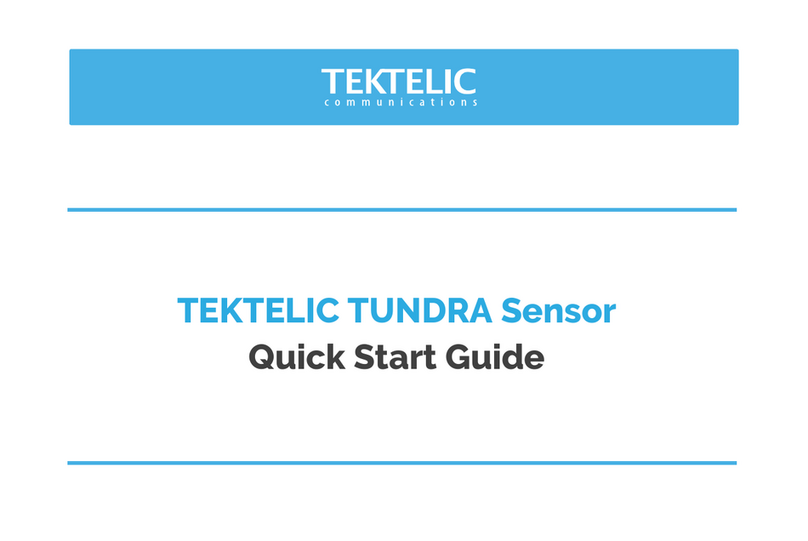
TEKTELIC Communications
TEKTELIC Communications TUNDRA User manual
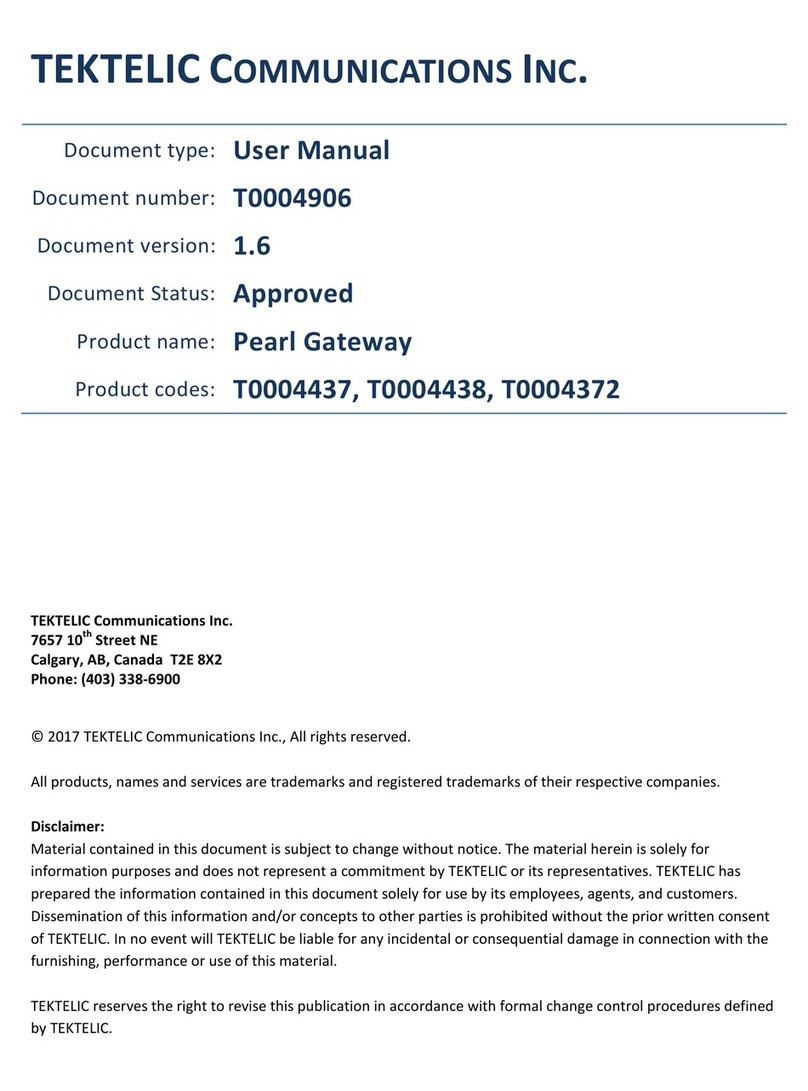
TEKTELIC Communications
TEKTELIC Communications T0004437 User manual
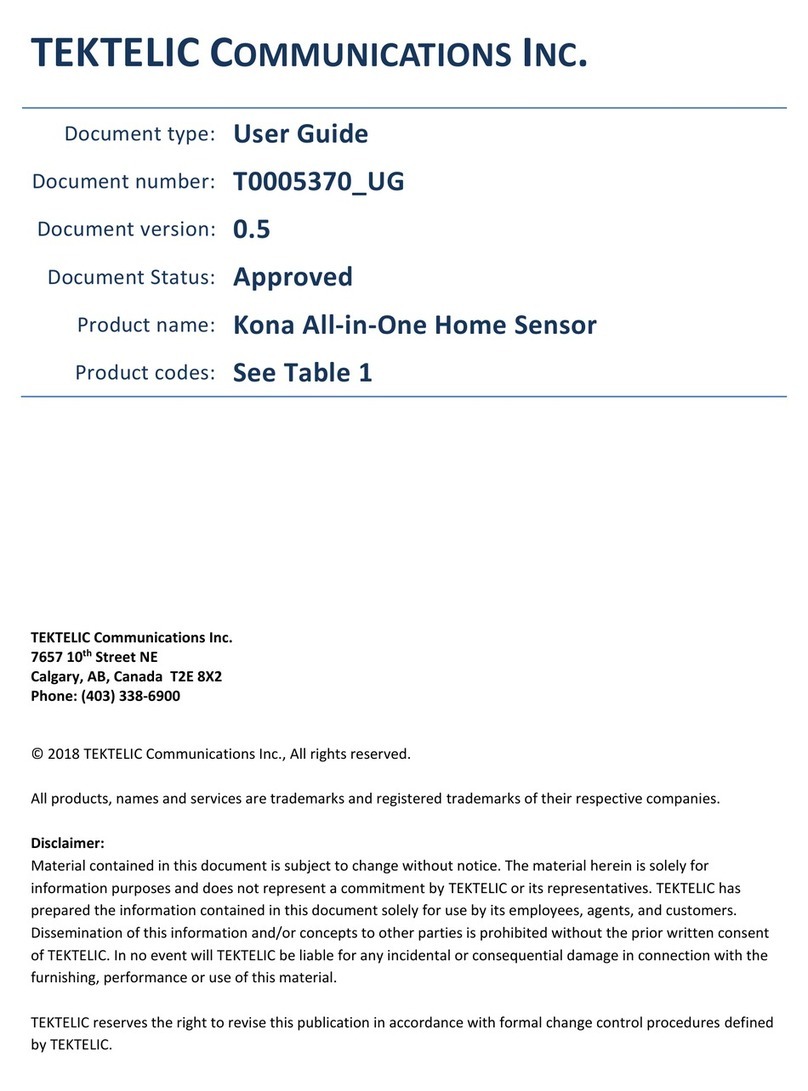
TEKTELIC Communications
TEKTELIC Communications Kona All-in-One Home Sensor Series User manual

TEKTELIC Communications
TEKTELIC Communications Kiwi User manual

TEKTELIC Communications
TEKTELIC Communications Kona Product manual
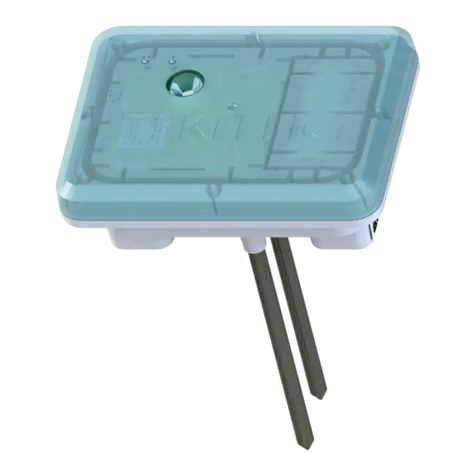
TEKTELIC Communications
TEKTELIC Communications T0005982 User manual

TEKTELIC Communications
TEKTELIC Communications TUNDRA User manual
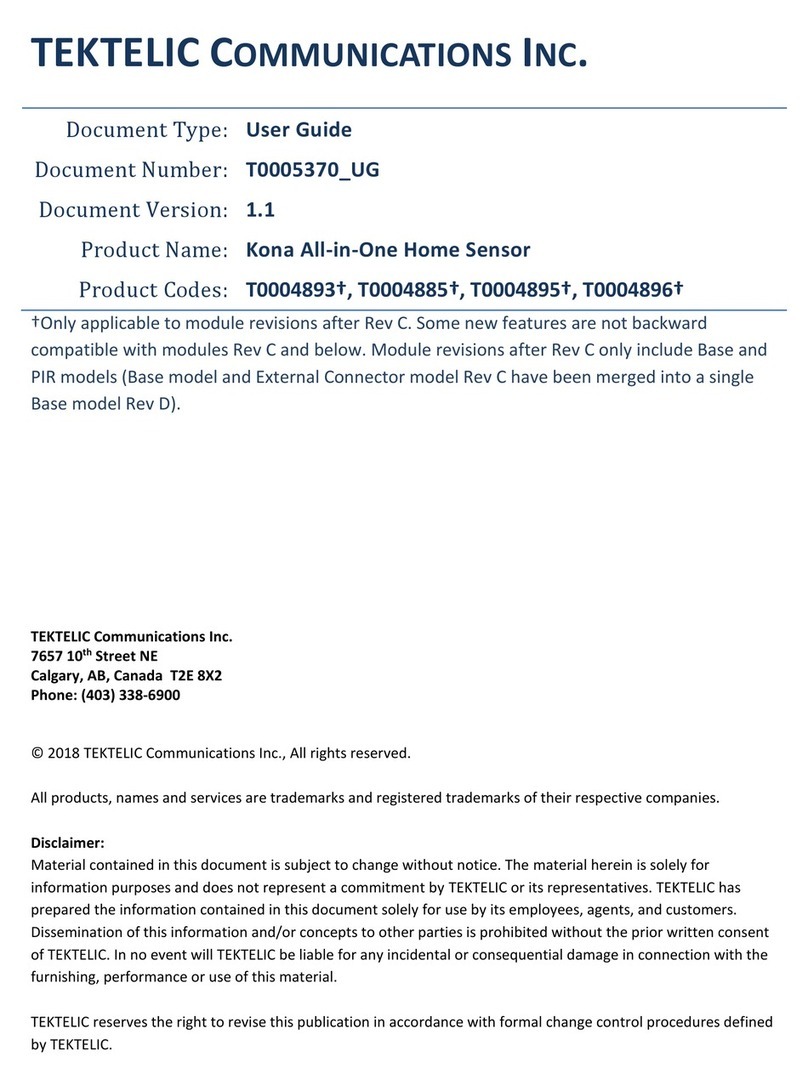
TEKTELIC Communications
TEKTELIC Communications Kona All-in-One Home Sensor User manual

TEKTELIC Communications
TEKTELIC Communications T0006623 User manual
